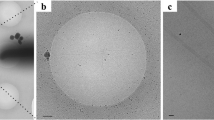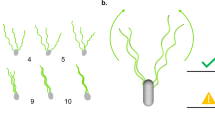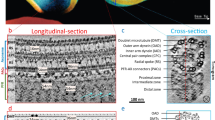Abstract
SOME cilia and flagella beat in a complex three-dimensional manner, and, in addition, the angular velocity at the tip is greater than at the base. Presumably the bundle of fibrils which make up a cilium or flagellum contains both conducting and contractile elements1. Trypanosome flagella, in common with most flagella and cilia, have 9 peripheral and 2 central fibres2.
This is a preview of subscription content, access via your institution
Access options
Subscribe to this journal
Receive 51 print issues and online access
$199.00 per year
only $3.90 per issue
Buy this article
- Purchase on Springer Link
- Instant access to full article PDF
Prices may be subject to local taxes which are calculated during checkout
Similar content being viewed by others
References
Bradfield, J. R. G., Symp. Soc. Exp. Biol., Fibrous Proteins, No. 9 (1954), ed. R. Brown and J. F. Danielli, 306 (Cambridge Univ. Press, 1955).
Anderson, E., Saxe, L. H., and Beams, H. W., J. Parasit., 42, 11 (1956).
Author information
Authors and Affiliations
Rights and permissions
About this article
Cite this article
WALKER, P. Organization of Function in Trypanosome Flagella. Nature 189, 1017–1018 (1961). https://doi.org/10.1038/1891017a0
Issue Date:
DOI: https://doi.org/10.1038/1891017a0
This article is cited by
-
Motility and more: the flagellum of Trypanosoma brucei
Nature Reviews Microbiology (2014)
-
Paraflagellar rod is vital for trypanosome motility
Nature (1998)
-
Role of Lysosomes and of Cell Membranes in Photosensitization
Nature (1966)
Comments
By submitting a comment you agree to abide by our Terms and Community Guidelines. If you find something abusive or that does not comply with our terms or guidelines please flag it as inappropriate.



